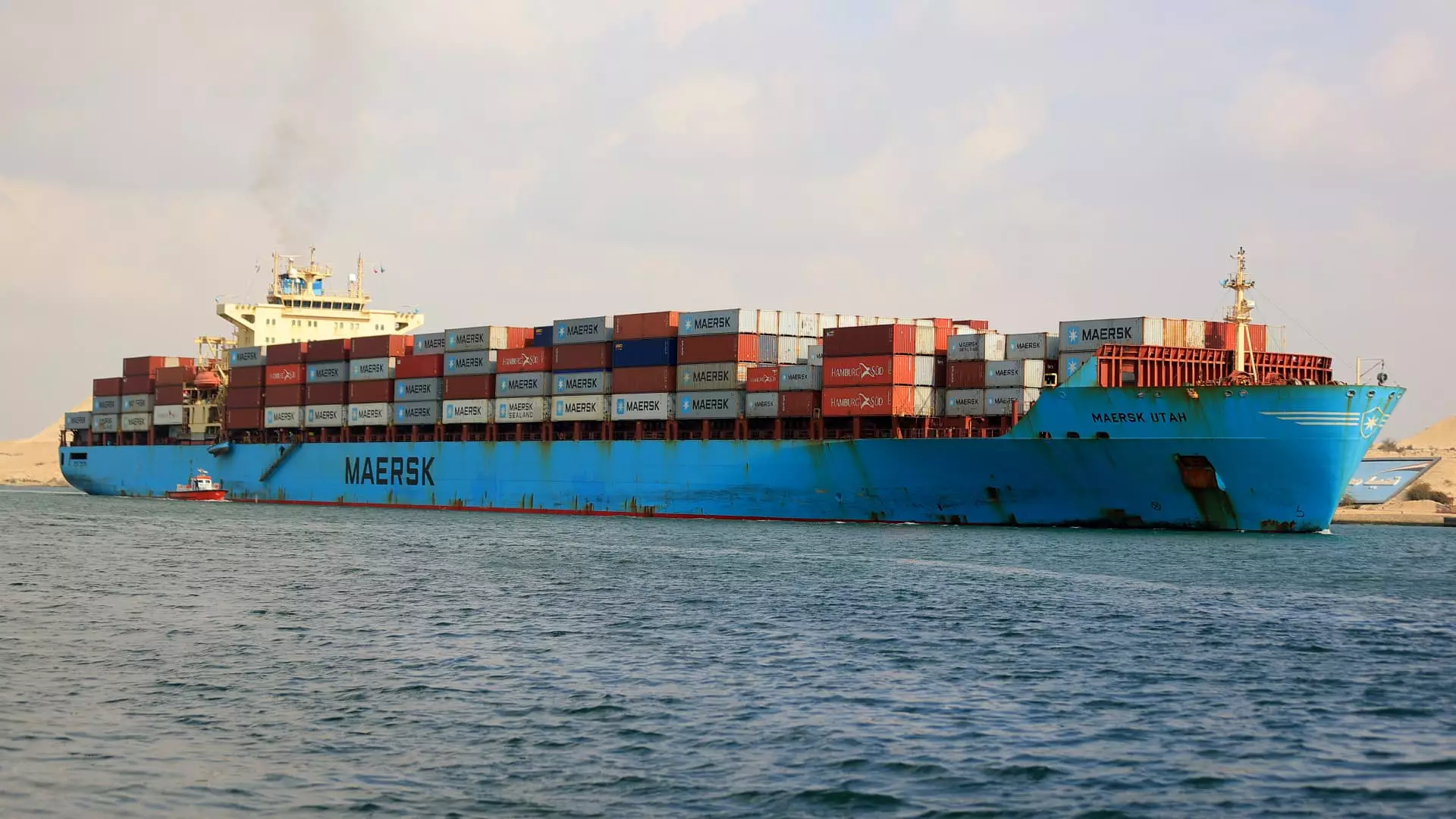The threat to global trade in the Red Sea continues to loom large, despite efforts to protect commercial vessels from attacks by Iranian-backed Houthi militants based in Yemen. Danish shipping giant Maersk’s recent decision to halt Red Sea and Gulf of Aden transits until further notice serves as a stark reminder of the difficulties faced by the U.S.-led initiative known as Operation Prosperity Guardian. The U.S. Navy’s engagement with Houthi boats that targeted the Maersk Hanzhou over the weekend highlights the severity of the situation. These ongoing threats have led to a significant shift in commercial shipping routes, as more vessels choose to bypass the Red Sea entirely and opt for the route around the Cape of Good Hope. This change in direction has not only resulted in increased container rates but has also had a substantial impact on global trade, affecting billions of dollars and hundreds of vessels.
The Impact on Trade and Container Shipping
The repercussions of the mounting threats in the Red Sea are rippling throughout global trade. Analytics provider MarineTraffic revealed that as a result of the heightened danger, an increasing number of commercial ships are diverting away from the Red Sea and instead traversing the Cape of Good Hope, leading to a rise in container rates from Shanghai. This shift in routes has already impacted $225 billion in trade, affecting 330 vessels with a total capacity of approximately 4.5 million containers. Each container, estimated to be worth $50,000, is a substantial loss for industries reliant on global trade. Kpler, a global trade data provider, reported a significant spike in the number of ships opting for the Cape of Good Hope route, indicating the growing concern about the safety of vessels in the Red Sea.
Operation Prosperity Guardian, a U.S.-led initiative aimed at safeguarding commercial shipping in the Red Sea, faces mounting challenges due to the escalating threats. To combat these dangers effectively, the task force requires extensive naval coordination and strategic planning. U.S. Navy Rear Admiral (Ret.) Mark Montgomery, a senior fellow at the Foundation for Defense of Democracies, stressed the need for grouping vessels in convoys and deploying helicopters to prevent attacks at key chokepoints, highlighting the sizable costs associated with defensive actions. Adopting a “deterrence by denial” strategy, the coalition aims to make attacks unlikely to succeed by intercepting Houthi missiles or drones. Additionally, “deterrence by punishment” plays a crucial role, as U.S. military actions against Houthi boats demonstrate. Despite concerns about escalation, failure to deter Houthi attacks could invite further aggression.
Efforts to protect commercial vessels face unique challenges, alongside tensions within the coalition. CEO of data firm Windward and former Israeli navy officer, Ami Daniel, highlighted the branding of the U.S.-led coalition as a factor that has led France to prioritize protecting French companies exclusively. This approach is not conducive to effective coalition building and overlooks the complexities of global trade and shipping. Montgomery, however, dismissed these concerns, emphasizing that the branding of coalition task forces has been a common practice for decades. While there may be differing priorities among coalition partners, the need to safeguard global trade remains paramount.
The Complexities of Trade and Evolving Shipping Routes
The growing dangers in the Red Sea have prompted shipping operators to make individual decisions regarding transit through the region. The potential risks associated with the Red Sea and the Suez Canal have led carriers to opt for the longer route around the Cape of Good Hope, prioritizing the safety of crews and cargo. However, this shift in routes can lead to imbalances in equipment and potential shortages in Asia as transit times increase. Goetz Alebrand, the head of ocean freight at DHL Global Forwarding, highlights the need for careful consideration of the evolving trade dynamics and the broader implications of alternative shipping routes.
The threats posed by Iranian-backed Houthi militants in the Red Sea continue to present significant challenges to global trade. Efforts to protect commercial vessels face a formidable task in ensuring the safety and security of these vital economic lifelines. The success of Operation Prosperity Guardian relies heavily on effective naval coordination and strategic planning to deter further attacks and prevent disruptions to global trade. A collaborative approach among coalition partners is crucial, with a focus on safeguarding all international vessels and preventing the adversaries from achieving their objectives. The complexities of global trade and shipping require careful navigation to adapt to evolving threats and maintain the free flow of goods around the world.


Leave a Reply